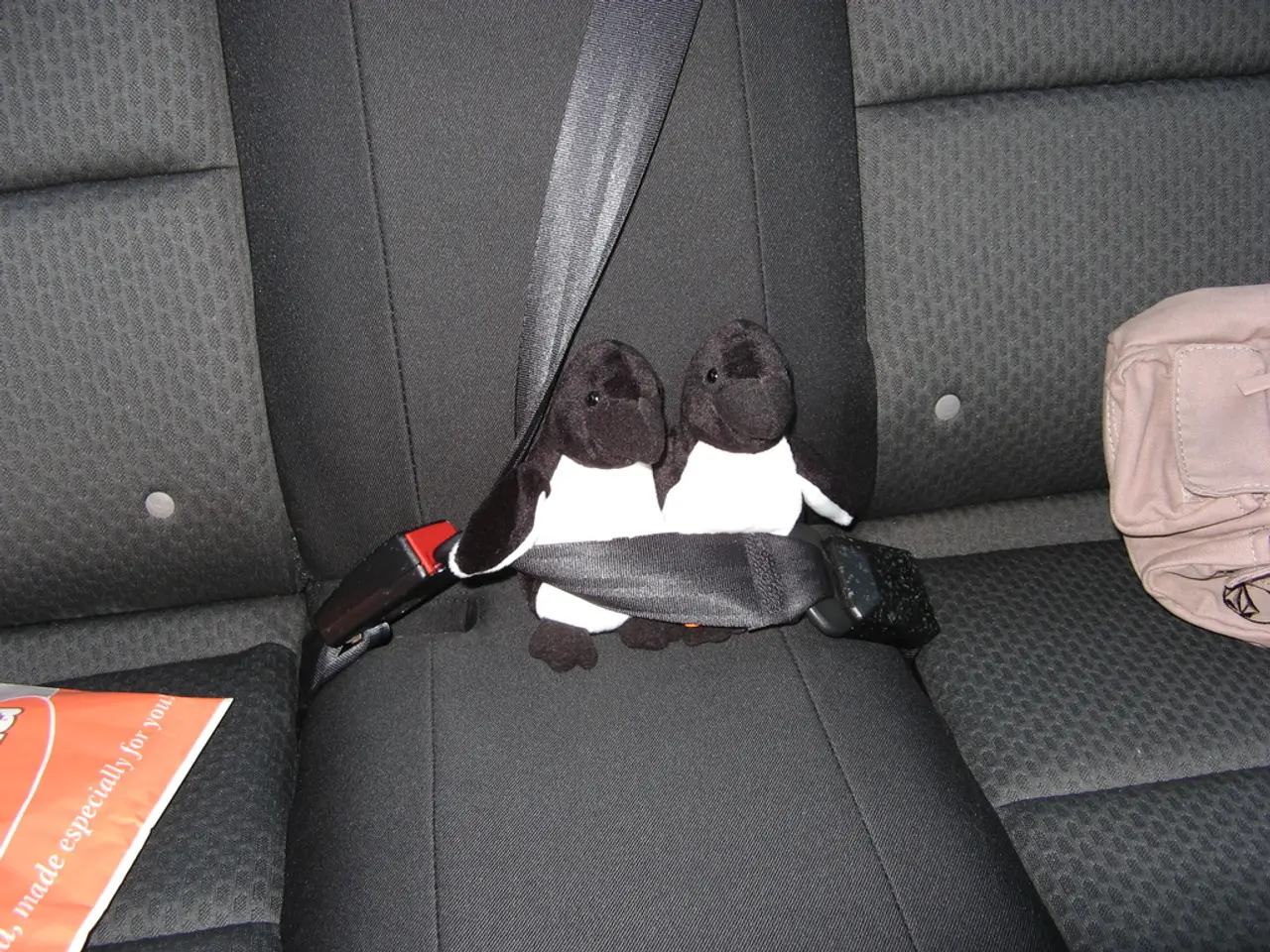Comprehending Automobile Seat Regulations: Prioritizing Child Safety During Driving
In the world of parenting, one of the most crucial decisions is choosing the right car seat for your child. However, child car seat laws vary significantly across regions, generally based on children’s age, weight, height, and seating position in the vehicle.
Parents should research local car seat laws to understand the specific requirements for each age group and seating position in their area. Regularly checking for updates is essential to ensure compliance with the most current car seat laws.
When choosing a car seat, it's important to select one that aligns with the child's age, weight, and height, as well as the legal requirements. For instance, in Australia/New Zealand, children under 6 months must use a rear-facing seat, while 6 months–4 years can use either a rear or forward-facing seat with a harness.
Booster seats are required for older children who have outgrown their forward-facing car seats but are not yet tall enough to use an adult seat belt safely. In San Diego, California, USA, children under 8 years must ride in a booster seat until they reach a height of 4’9”.
Proper installation of the car seat is crucial, following both the manufacturer's instructions and the law. Many regions prohibit children under a certain age or height from sitting in the front seat to reduce injury risk. Laws usually require children to be in the back seat when possible.
In Fujairah, UAE, under 4 years must use an appropriate child restraint, and under 10 years or under 145 cm are not allowed in the front seat. Vietnam, from 2026, will require children under 2 years to use a rear-facing car bed, and under 10 years or shorter than 1.35 m to not sit in the same row as the driver, except in single-row vehicles.
Many countries follow United Nations regulations (R44 or R129 standards) to certify car seats. Booster seats are generally used until children are approximately 10-12 years old or large enough to fit seat belts properly.
While the age and height thresholds and exact seating requirements vary by country, the core principles are consistent globally: use rear-facing seats for infants, progress to forward-facing seats with harnesses for toddlers and preschoolers, use boosters until the child fits an adult seat belt safely, and keep young children in the rear seats for safety.
Parents and caregivers should always check local laws before travel, as some regions impose fines and penalties for non-compliance and have different requirements for taxis and rented vehicles. It's also essential to buckle up yourself and enforce seat belt use for all passengers, as children are more likely to follow safety practices when they see adults doing the same.
References:
- Australian Government - Child car restraints
- Fujairah Municipality - Child Car Seat Laws
- Vietnam Road Safety Fund - Child Car Seats
- NHTSA - Booster Seats
- City of San Diego - Child Car Seat Laws
- Home-and-garden magazines might feature articles on the best lifestyle choices for pet-friendly home decor and car-maintenance tips to ensure safe travels with your furry friends.
- Lifestyle websites can offer valuable guides on home-and-garden improvement projects, pet care advice, and car-maintenance tutorials for keepings your home and vehicles in top condition.
- When planning family road trips, remember to follow local car seat laws for each destination to provide the safest journey for your children. Review pet-friendly accommodations, parks, and car-maintenance service locations in tandem to ensure a smooth vacation.




